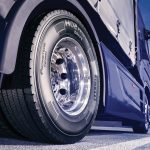And now for something completely different…
And now for something completely different…
Forklifts aren’t only used in warehouses, factories, and at transport operators: two Clark forklift trucks are working hard at a Düsseldorf art foundry.
The family-owned Schmäke art foundry was founded on 1 April 1926 by Gustav Schmäke and was continued by Herbert Schmäke. The family’s third generation, led by Prof Karl-Heinz Schmäke, established the business internationally, and Karl-Heinz also taught the craft at the Dusseldorf Art Academy. Fast forward to 2024 and the art foundry is now managed by Dominik and Gillian Schmäke, who are among the youngest masters in Germany.
A worldwide reputation in the art world
The Schmäke art foundry and its team are recognised worldwide for their first-class work. The foundry’s international customer base has been loyal to the traditional family business for years. These include well-known artists such as Ida Ekblad, Tony Cragg, Eva Hild, and Markus Lüpertz. Museums, churches, and local authorities also commission sculptures by renowned artists from Schmäke or commission the Düsseldorf-based specialist company to restore works of art. The company isn’t just passionate about selling works of art, though; it is also committed to training future artists.
From model to metal
“The artist comes to our workshop with a model of their artwork. This is either made of wood, clay, or plaster,” says Dominik Schmäke – a trained metal and bell caster. “Our job is to create the model in bronze or aluminium using the sand casting or lost wax process.” Models are either taken over true to scale, or enlarged on site or in the artist’s studio. The artist is free to choose from any conceivable material, be it plaster, polystyrene, clay, wood, or wax. The wax casting process is particularly suitable for sculptures that are difficult to mould or where particularly high demands are placed on surface accuracy and sharpness.
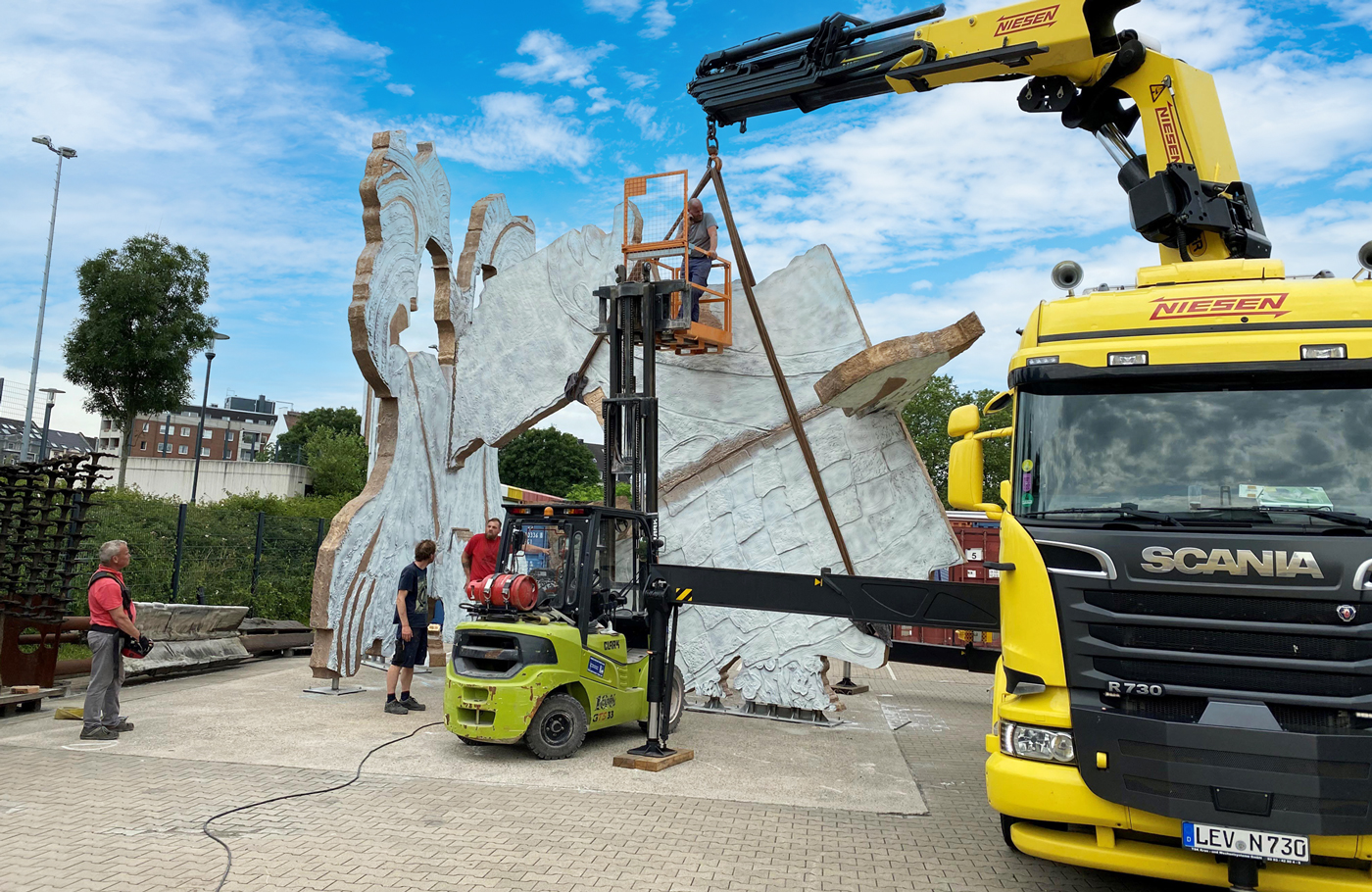
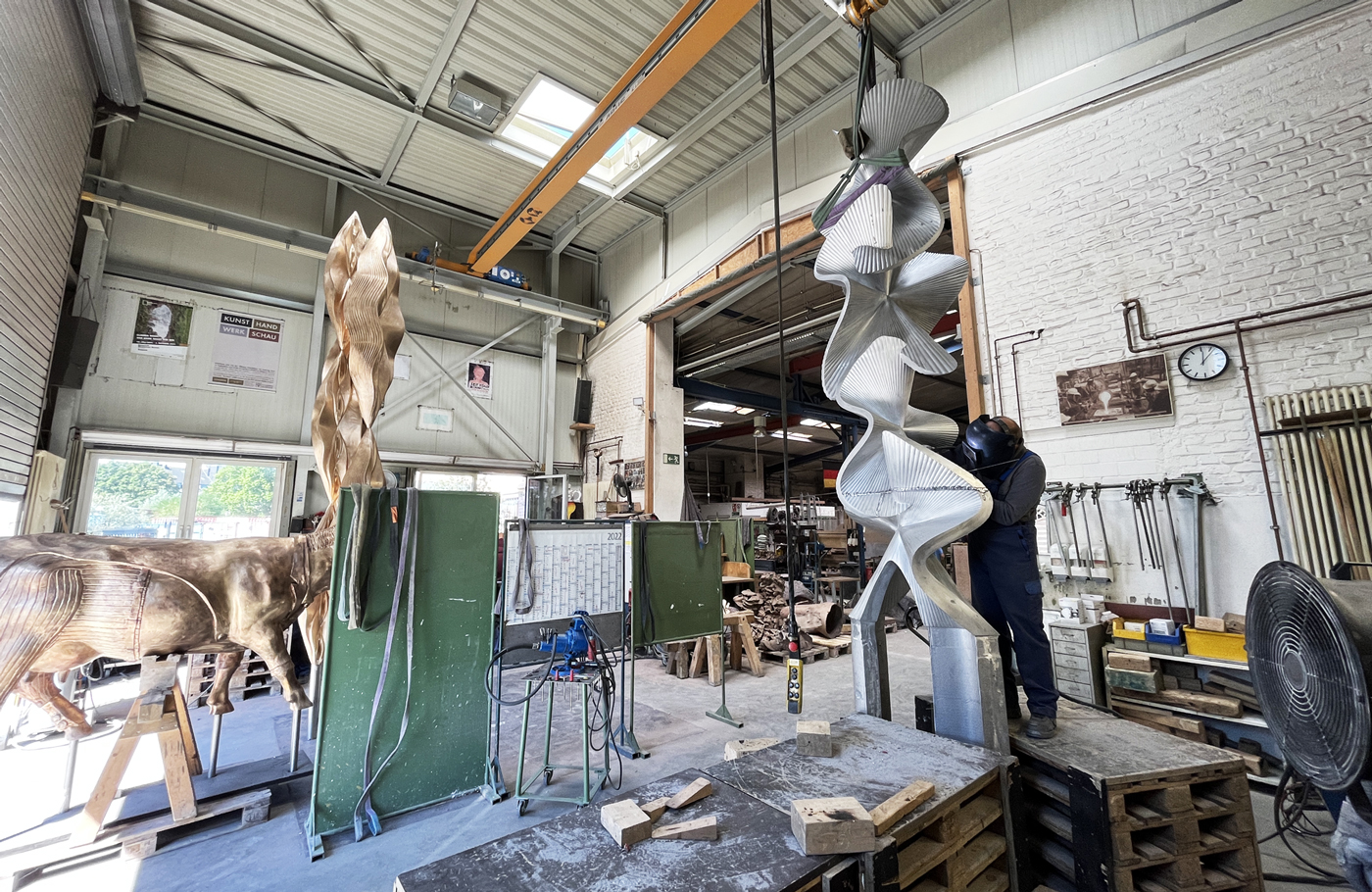
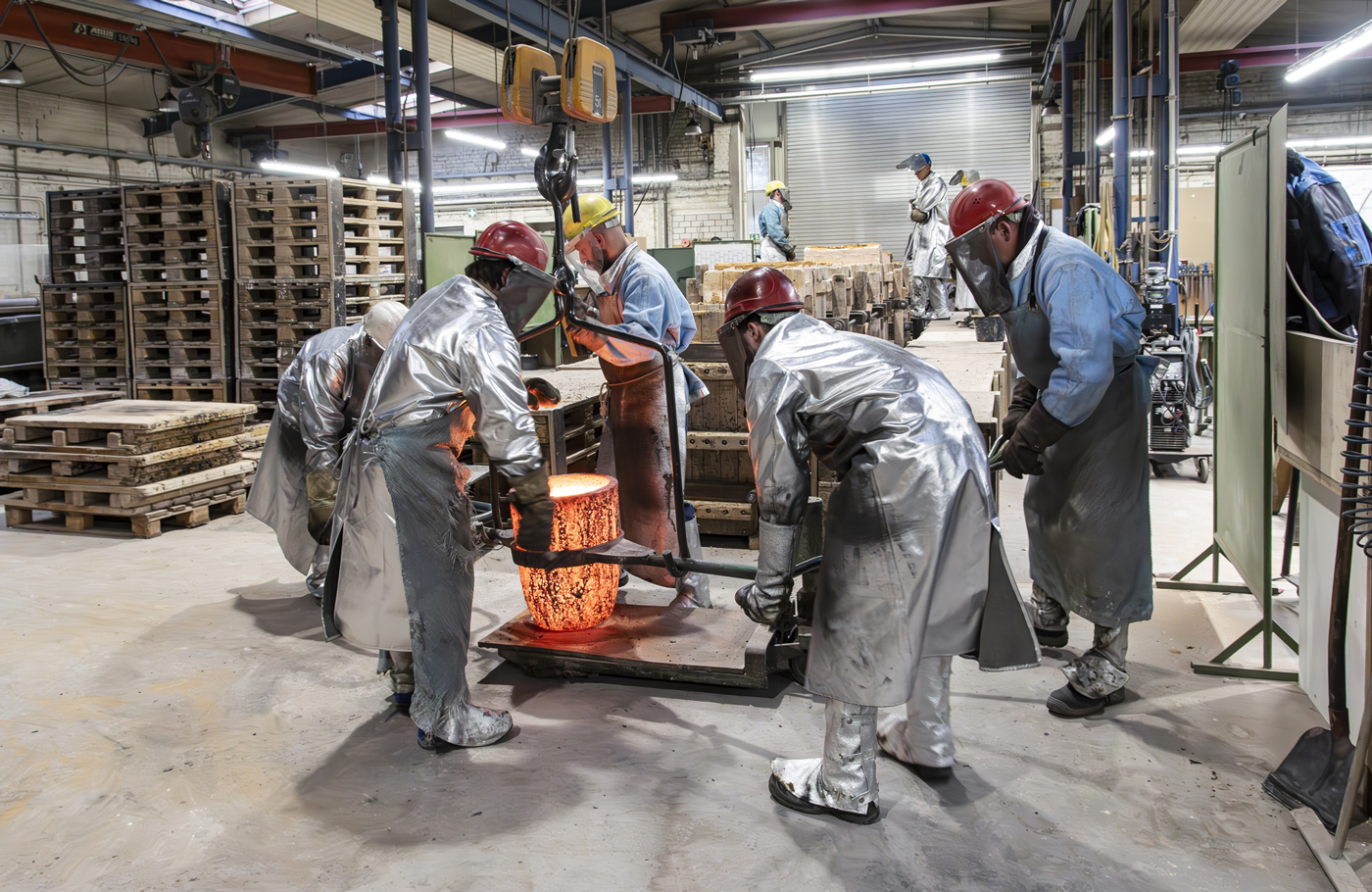
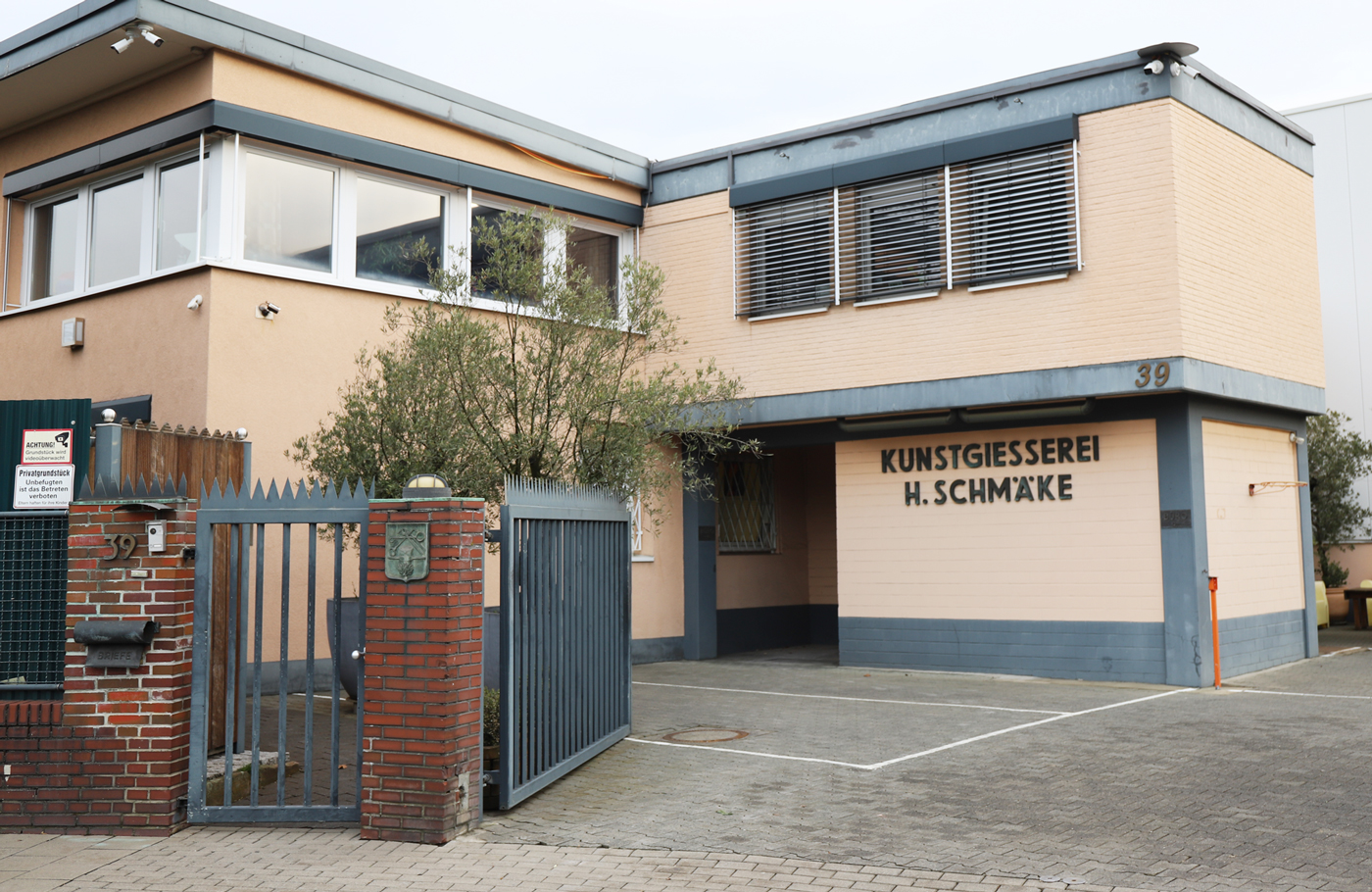
After casting, chisellers put the finishing touches to the art to realise the work entirely in the artist’s spirit. “The size doesn’t really matter,” explains Schmäke. “For example, we realised a bronze art project for the Norwegian artist Ida Ekblad in the Kistefos Sculpture Park in Norway. The 200-m2 (7.03 x 10.1 x 5m) object called “A deadly slumber of all forces” consisted of 200 individual parts, which we assembled and welded together on site. This was not only a logistical challenge, but also unusual in terms of assembly.”
Over the years, Schmäke has also made a name for itself in the assembly of art objects. In cooperation with renowned art shipping companies, the foundry delivers and assembles the artworks worldwide. Thanks to its many years of expertise, works such as Markus Lüpertz’s “Hercules” and Tony Cragg’s “Turin Towers” and “Montpellier” have been created at the Schmäke art foundry.
Clark forklifts prove themselves as logistics artists
Schmäke uses two Clark GTS30 and GTS33 LPG forklifts with respective load capacities of 3 and 3.3 tonnes to transport raw materials, auxiliary materials, or even finished works of art.
“For us, the vehicles not only have to transport large and bulky loads, but often also very valuable sculptures. In addition to a stable driving style, a great deal of sensitivity is also required when controlling the vehicle, especially when valuable works of art are on the forks,” says Schmäke.
The Clark forklift trucks are the ideal choice here, as they are characterised by a very stable driving style and sensitive load handling. Clark has also equipped the forklifts with a separate gearbox. This reduces vibrations at the driver’s seat and guarantees smooth driving behaviour, even in the outdoor area of the art foundry when materials or works of art have to be transported between the halls. Together with the stable, vibration-free steering axle and the ergonomic driver’s workplace, the GTS series is not only robust and reliable, but also extremely comfortable and safe.
Thanks to the nested mast profiles, the operator has a very good view of the forks and the load through the mast. The heavy-duty, nested mast profiles also offer high strength even with heavy loads, which is the order of the day at Schmäke. For low-noise and smooth lifting operations, the trucks are equipped with lift mast damping as standard. This ensures smooth transition between the individual mast profiles, protecting both the lift mast components and the load.
Wet multi-disc brake with powerful braking effect
Another advantage comes from the encapsulated, oil-cooled multi-disc brakes, which ensure smooth operation by eliminating downtime and additional maintenance costs. Compared to drum brakes, multiple disc brakes require a good 50% less braking force. Another advantage is that a dusty or wet environment like the foundry has no negative impact on the encapsulated multiple disc brakes, allowing them to achieve their full braking effect even under these testing conditions.
Ergonomic and user-friendly
As the vehicles are used both indoors and outdoors in the Schmäke art foundry, they are equipped with a partial cab and exterior mirrors. This consists of a glass roof, a front and rear windscreen, and a rain cover for the sides. “We are not only very satisfied with the Clark forklifts in terms of their driving style and robust design, (but) the ergonomic driver’s workplace – which gives the driver plenty of head and legroom – and the intuitive operation of the forklifts also ensure a high level of safety in our operations,” Schmäke reveals.
The art foundry has leased the vehicles from Clark’s contractual partner, Gabelstapler Finger from Wermelskirchen, which is also responsible for the maintenance and servicing of the vehicles. “With Finger, we have an extremely reliable partner which supports us in word and deed and always keeps an eye on the maintenance intervals of our vehicles,” emphasises Schmäke.
Because the Clark vehicles are so robust and reliable, the foundry also uses them for art in the truest sense of the word. For instance, in order to extract the material for the refractory mix, the forklift trucks are used to crush stones with their weight.
The partnership between Schmäke and Clark shows how modern technology can support and enhance traditional craftsmanship – and proves that the humble forklift is up to just about any task!
Photographs supplied by Clark Europe, Kunstgießerei Schmäke and Rainer Bergner.
Published by
Focus on Transport
focusmagsa



